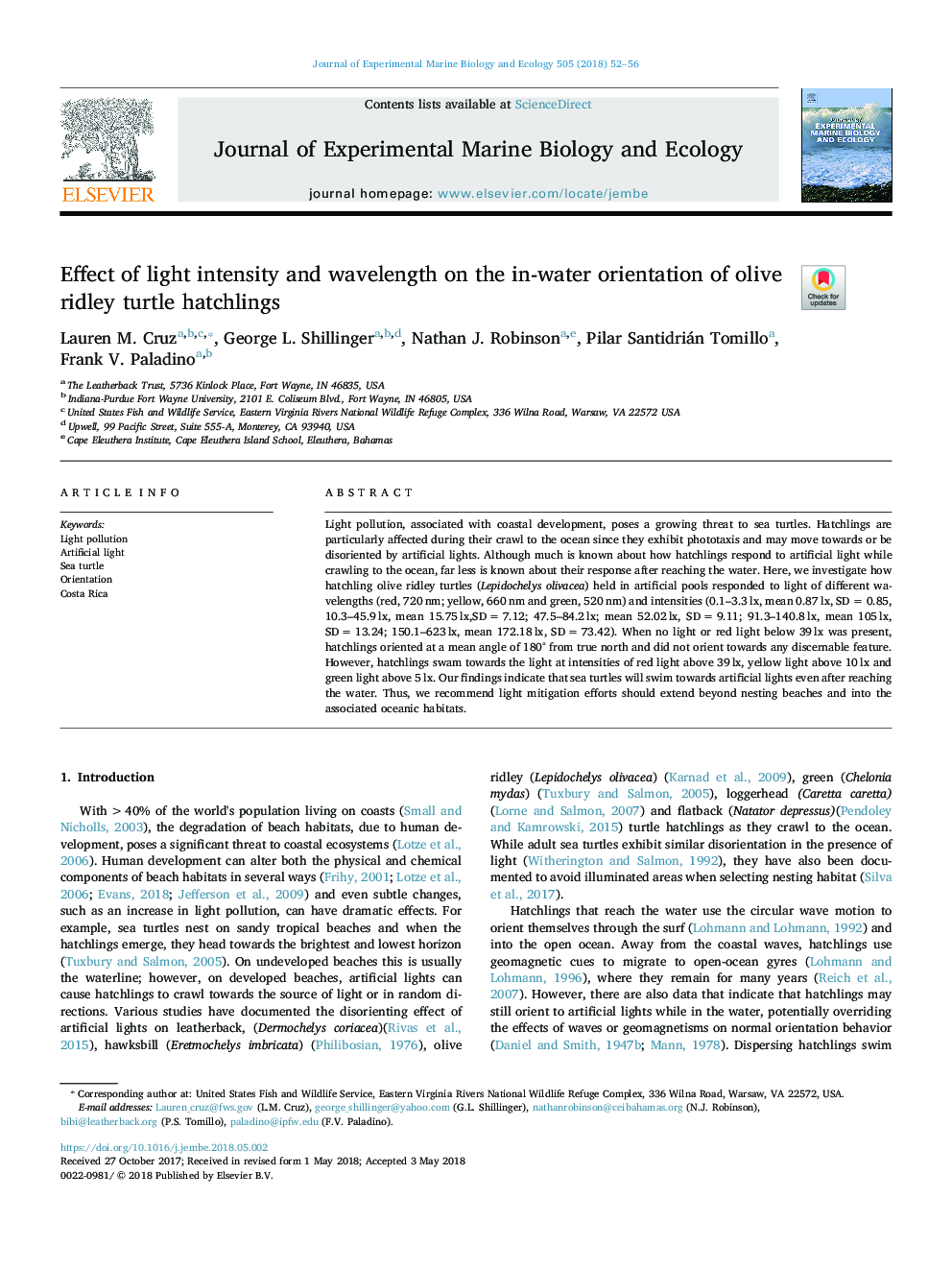| Article ID | Journal | Published Year | Pages | File Type |
|---|---|---|---|---|
| 8848905 | Journal of Experimental Marine Biology and Ecology | 2018 | 5 Pages |
Abstract
Light pollution, associated with coastal development, poses a growing threat to sea turtles. Hatchlings are particularly affected during their crawl to the ocean since they exhibit phototaxis and may move towards or be disoriented by artificial lights. Although much is known about how hatchlings respond to artificial light while crawling to the ocean, far less is known about their response after reaching the water. Here, we investigate how hatchling olive ridley turtles (Lepidochelys olivacea) held in artificial pools responded to light of different wavelengths (red, 720â¯nm; yellow, 660â¯nm and green, 520â¯nm) and intensities (0.1-3.3â¯lx, mean 0.87â¯lx, SDâ¯=â¯0.85, 10.3-45.9â¯lx, mean 15.75â¯lx,SDâ¯=â¯7.12; 47.5-84.2â¯lx; mean 52.02â¯lx, SDâ¯=â¯9.11; 91.3-140.8â¯lx, mean 105â¯lx, SDâ¯=â¯13.24; 150.1-623â¯lx, mean 172.18â¯lx, SDâ¯=â¯73.42). When no light or red light below 39â¯lx was present, hatchlings oriented at a mean angle of 180° from true north and did not orient towards any discernable feature. However, hatchlings swam towards the light at intensities of red light above 39â¯lx, yellow light above 10â¯lx and green light above 5â¯lx. Our findings indicate that sea turtles will swim towards artificial lights even after reaching the water. Thus, we recommend light mitigation efforts should extend beyond nesting beaches and into the associated oceanic habitats.
Related Topics
Life Sciences
Agricultural and Biological Sciences
Aquatic Science
Authors
Lauren M. Cruz, George L. Shillinger, Nathan J. Robinson, Pilar Santidrián Tomillo, Frank V. Paladino,
